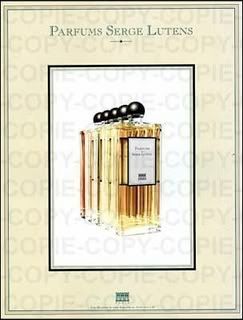Golden sun, that's what helicrysum ( its alternative name) means in Greek; the French similarly call it "petit soleil".
A gift of the gods bestowed upon men, and both golden and sunny its inclusion in perfumes is indeed, as we will see.
Greeks also call it αμαραντος (never withering, literally "immortelle"), because of its legendary stamina to environmental hardship; the term sempre viva in Italian amounts to the same thing.
"Flower of stone and of my dreams,tender part of my soul, eternal beauty of my yearning,
cool fragrance in the wind of the desert.[...]
In this holy land of dreams, where we both sprang,
I confess my love's passion, sempre viva, my Cytherean daughter,
oh sweet extension of my soul, oh dry flower of the land of my love."
[by Yiorgos Kasimatis-Drymoniatis, "Blood & Eros of the Small Homeland"; translation from the Greek my own]
Helichrysum angustifolium (meaning long and narrow leaved) or Helichrysum italicum (because it grows abundantly in Italy and especially Corsica, but is rare elsewhere on the globe) is steam distilled to produce a yellow-reddish essential oil which is prized in perfumery thanks to its unique odour profile and properties, rich in terpenes, ketones as well as neryl acetate and monoterpenic alcohols (notably linalool and nerol).
More than a ton of helichrysum/immortelle blossoms is required to produce just under a kilo of essential oil, rendering the oil an expensive one.
Helichysum Italicum is harvested in June as the level of Neryl acetate, the main beneficial component (immortelle has anti-inflammatory, anti-microbial and anti-oxidant properties and a corticoid-like action), is at its peak then; but a second harvest also takes place in October and November. In the region of Sartene, in the Ortolo valley, among the menhirs, the dolmens and other megalithic ruins, there are bio-sustainable fields where immortelle is cultivated, but the wild blossoms scatter the hills from the Ortolo up the mountains of Balagna and down the sea shores "licking" the Balkans. What's essential is the sun. Even as far back as classical writer Theophrastus, "the most excellent and most fragrant of all materials come from the sunny regions"
The odour of immortelle absolute is difficult to describe, somewhat similar to sweet fenugreek and curcuma, spices used in Indian curry**, with a maple-like facet. Quite logical if you think that the essence contains alpha, beta and gamma curcumene. Like burnt sugar and dry straw combined is a suitable effort at conveying immortelle's nuanced profile, but the more the oil warms up on the skin, the more it reveals human-like, supple nuances of honeyed notes, waxy, intimate... It pairs well in chypres and oriental fragrances, where it pairs with labdanum, clove, citruses, chamomille, lavender and rose essences.
In medicine and aromatherapy immortelle has a significant position as it possesses properties that aid the liver, the digestive track, blood circulation, skin ailments and the general well-being. It's not even clear whether there are not many more beneficial properties to the yellow flower, research is continuing. Its skin healing properties have been the reasons immortelle is prized for long though and why L'Occitane en Provence devotes a whole anti-ageing skincare line to this humble little plant.
*Maquis also contains rosemary and cistus labdanum
**Sometimes called "curry plant" it has nothing whatsoever to do with the mixture of spices used in Indian cooking, nor with the curry tree (Murraya koenigii); it's only reminiscent in scent. The curry plant recurs among gardeners as a cat deterrent similar to the "scaredy-cat" plant, Plectranthus caninus (also known as Coleus canina).
List of fragrances featuring Immortelle/Helichrysum perceptibly:
[highlighted links point to fragrance reviews]
Annick Goutal Eau de Monsieur
Annick Goutal Sables
Ayala Moriel Immortelle L'Amour
Balmain Ambre Gris
Comptoir Sud Pacifique Aqua Motu
Dior Eau Noire
Eau d'Italie Jardin du Poete
Frapin 1270
Guerlain Cologne du 68
Guerlain Cuir Beluga
Histoires de Parfums Tubereuse 3 Animale
L'Artisan Parfumeur Cote d'Amour
L'Artisan Parfumeur Havana Vanille/Vanille Absolument
L'Atelier Boheme Immortelle
L'Erbolario Dolcelisir
L'Occitane Immortelle de Corse
L'Occitane Cade for men
Lolita Lempicka L de Lolita Lempicka
Mona di Orio Oiro
Nez a Nez Immortelle Marilyn
Nobile 1943 Ambra Nobile
Parfums de Nicolai Vanille Intense
Robert Piguet Visa re-issue (2007)
Serge Lutens Chypre Rouge
Serge Lutens Chene
Serge Lutens Jeux de Peau
Serge Lutens El Attarine
Serge Lutens El Attarine
Related reading on Perfume Shrine: Pyrazines; maple & caramel notes
.jpg)


.jpg)
.jpg)
.jpg)








